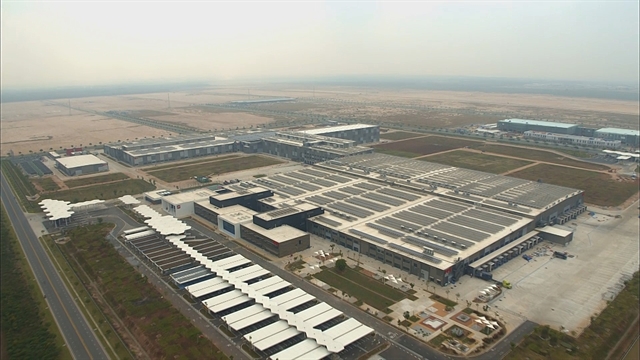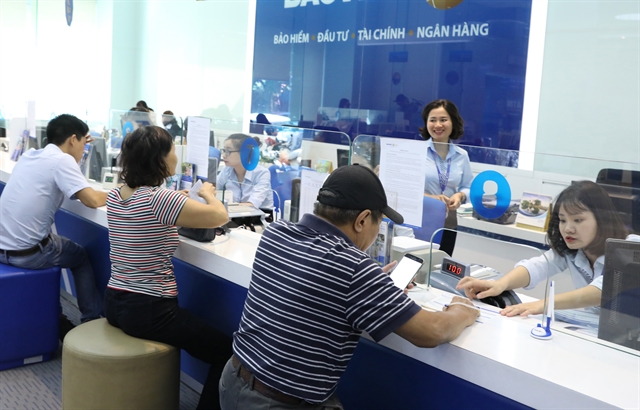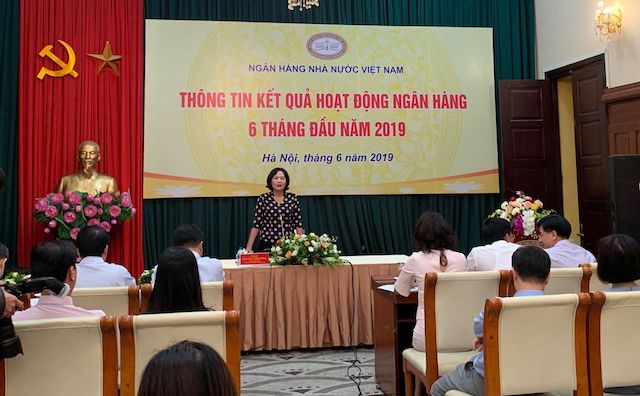 Economy
Economy

The State Bank of Việt Nam (SBV) will continue to follow a pro-active, flexible and cautious monetary policy as well as working in close conjunction with fiscal and other policies to control inflation, sustain the macro-economy and support economic growth in the second half of this year.

|
| Customers make transaction at Bảo Việt Bank in Hà Nội’s Trần Hưng Đạo Street. — VNS Photo Trương Vị |
HÀ NỘI — The State Bank of Việt Nam (SBV) will continue to follow a pro-active, flexible and cautious monetary policy as well as working in close conjunction with fiscal and other policies to control inflation, sustain the macro-economy and support economic growth in the second half of this year.
SBV Deputy Governor Nguyễn Thị Hồng made the statement at a conference to review the SBV’s monetary policy in the first half of 2019 and announce its key orientations for the second half of the year held in Hà Nội on Thursday.
Phạm Thanh Hà, director of the SBV’s Monetary Policy Department, said the SBV would help stabilise the monetary market through the use of open market operation (OMO) measures to regulate liquidity among credit institutions.
At the same time, the central bank would also regulate the interest rate and USD/VNĐ exchange rate policies in line with the Government’s targets and market movements, Hà said, adding the SBV would take intervention measures when necessary to stabilise the local foreign currency market.
According to the SBV, by June 6, the central bank’s USD/VNĐ daily reference exchange rate rose by 1.03 per cent against the end of 2018 to VNĐ23,060 per US dollar. The dollar meanwhile was listed at VNĐ23,355 for buying and VNĐ23,475 for selling at Vietcombank, up 0.86 per cent and 0.99 per cent against end-2018, respectively.

|
| SBV Deputy Governor Nguyễn Thị Hồng speaks at the conference. — VNS Photo Thu Hà |
Assessing the monetary policy management in the first half of 2019, Hồng said the monetary policy was effective, contributing to controlling inflation, stabilising the macro-economy and supporting economic growth.
According to the SBV, in the context of global uncertainty and local inflation, the managing of interest rates and exchange rates was positive and in accordance with macro-economic development. The liquidity of the banking system was good while the operation of the inter-bank market was also smooth.
Nguyễn Quốc Hùng, director of the SBV’s Credit Department, reported that total means of payment until June 10 this year increased by 5.17 per cent against the end of 2018.
This year, the central bank targets a 13 per cent increase of total means of payment and credit growth of 14 per cent, but adjustments could be made.
“The credit growth in the period expanded by 5.75 per cent, with focus on the Government’s five prioritised sectors of agriculture, exports, spare-parts industries, small- and medium-sized enterprises, and hi-tech firms, while limiting the capital to risky industries,” Hùng stated.
According to the SBV, the credit growth to date has been reasonable and positive with a focus on production and business, which has contributed to the restructuring of the agricultural sector as well as the development of fishery and spare-parts industries as well as small- and medium-sized firms, export and high-tech firms.
At the event, Nguyễn Văn Du, acting chief inspector of the SBV’s Banking Supervision Agency told Việt Nam News that credit institutions cleaned up VNĐ907.3 trillion of non-performing loans (NPLs) from 2012 to the end of the first quarter 2019, of which VNĐ163.14 trillion worth was settled in 2018 alone.
“With the results, the total NPL ratio of the entire banking system, excluding NPLs sold to the Việt Nam Asset Management Company (VAMC), was at 2.02 per cent by the end of March; and the value, including NPLs sold to the VAMC was 5.88 per cent,” Du said. — VNS




